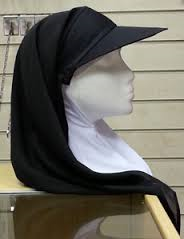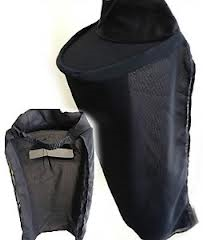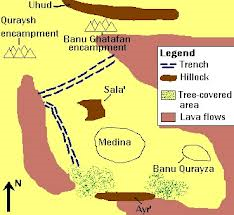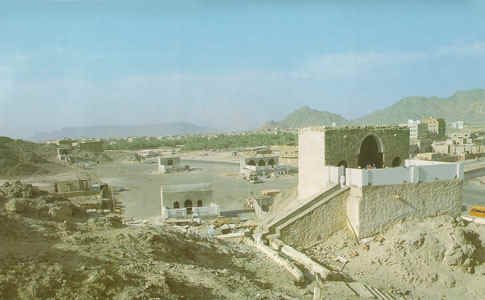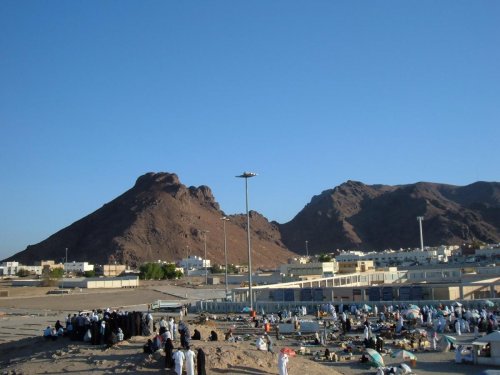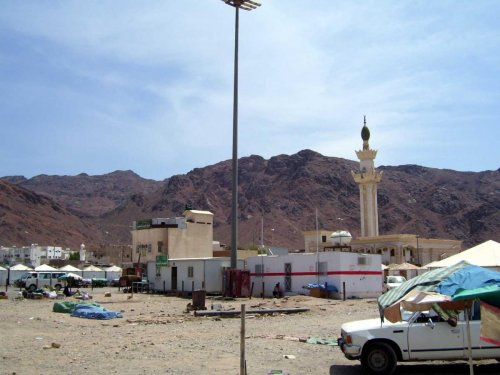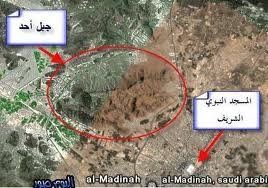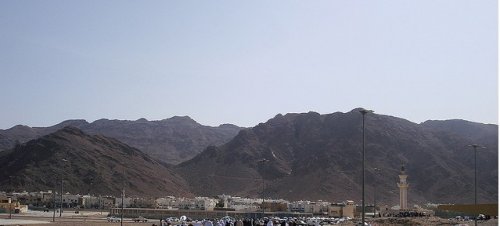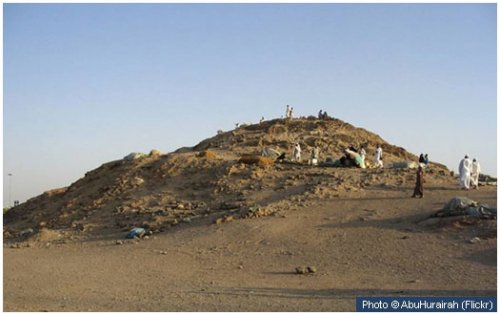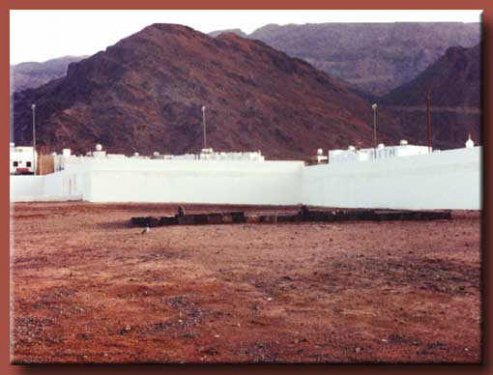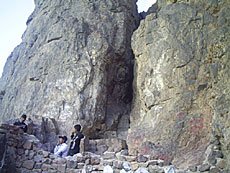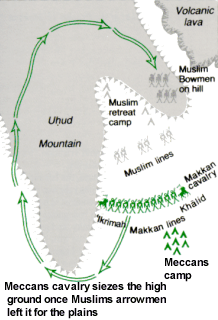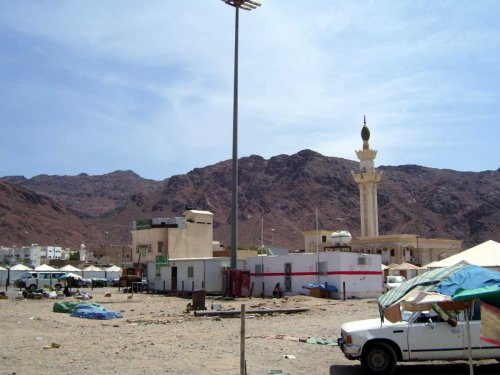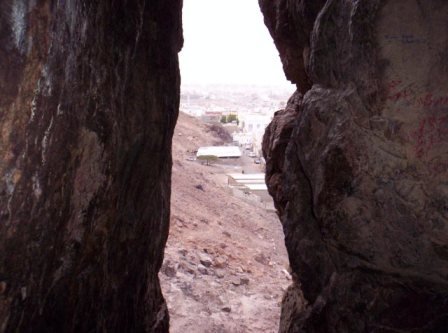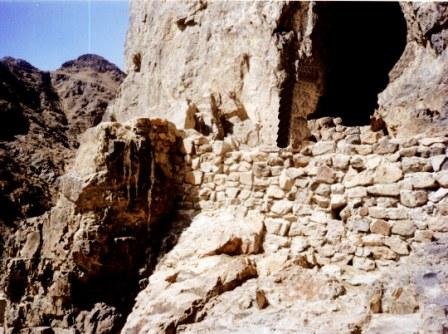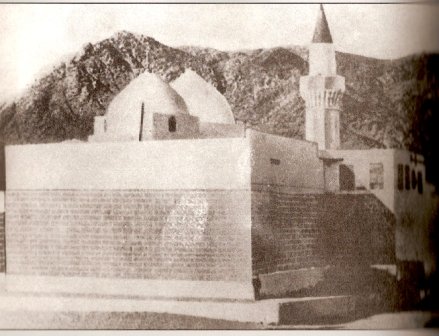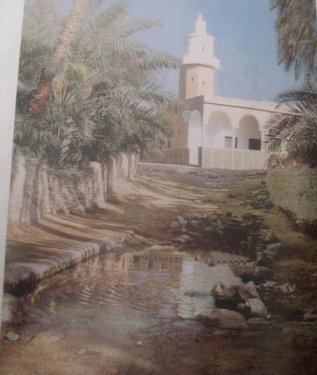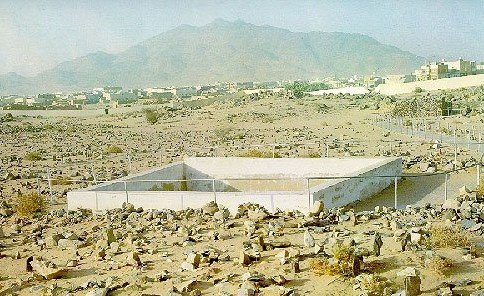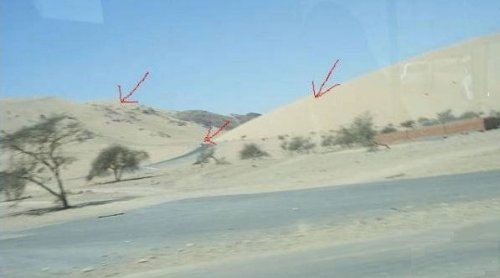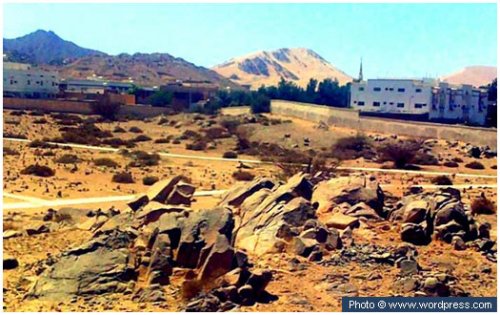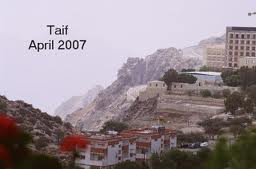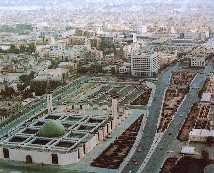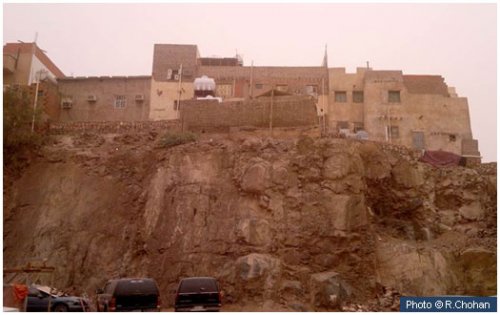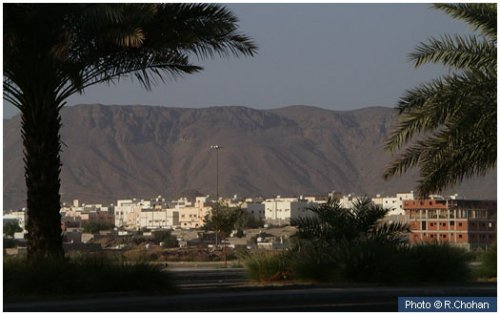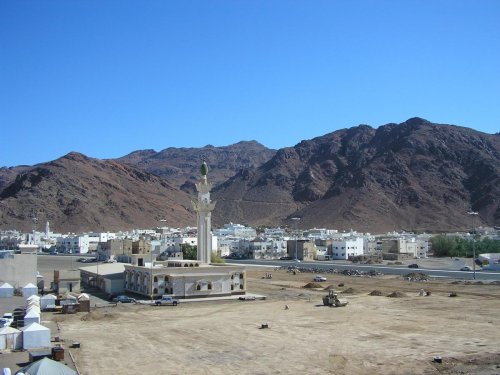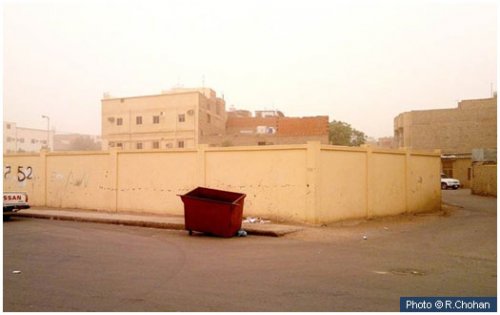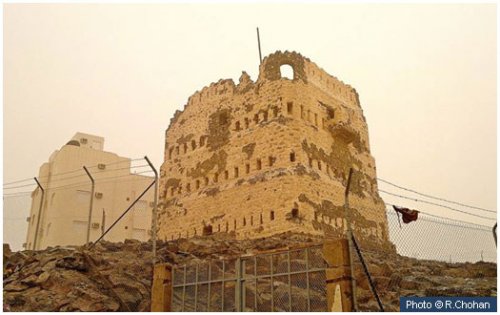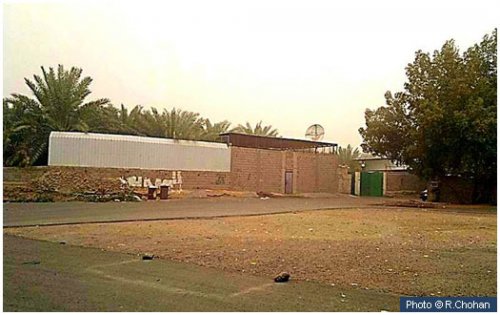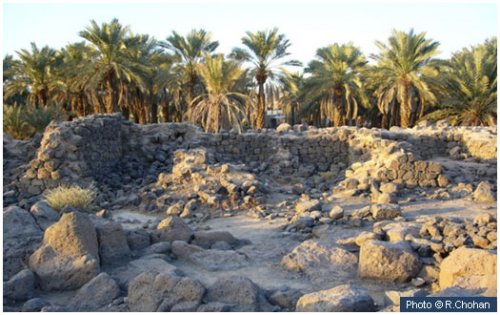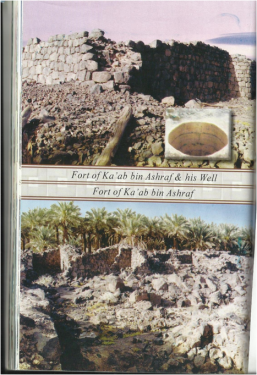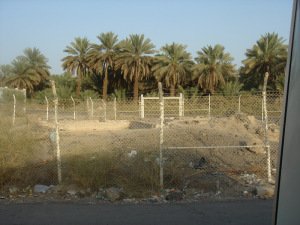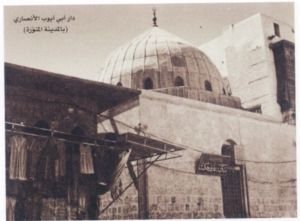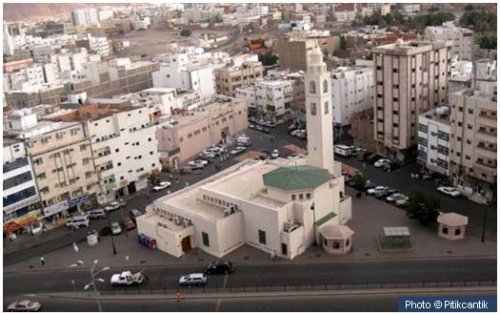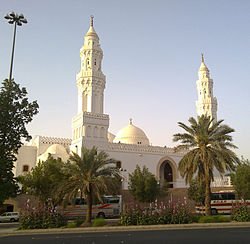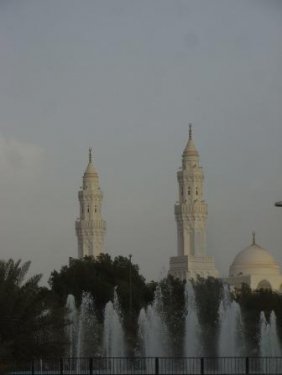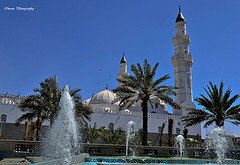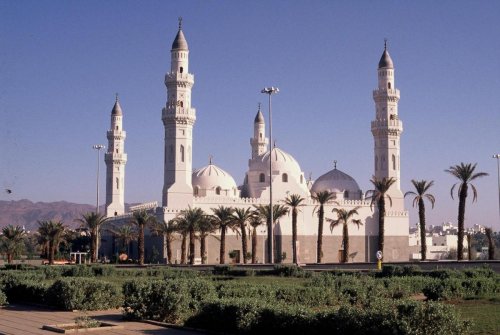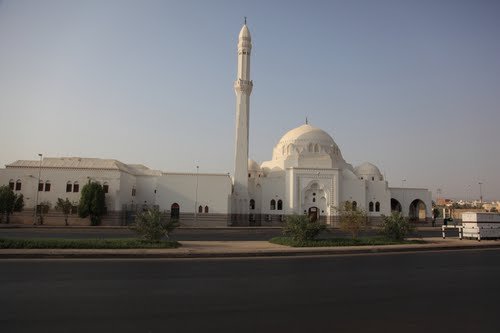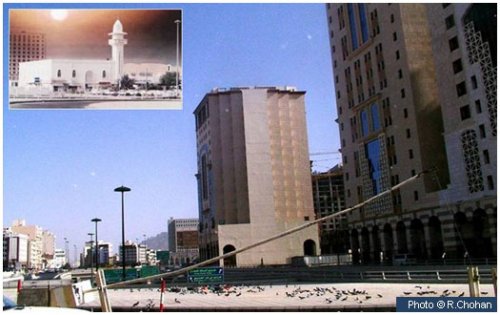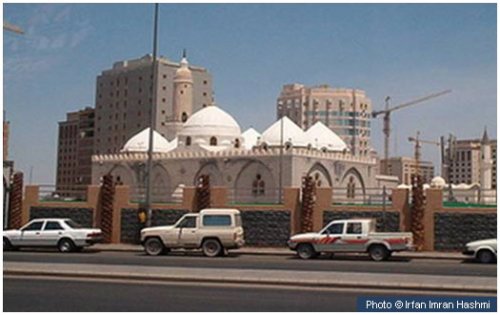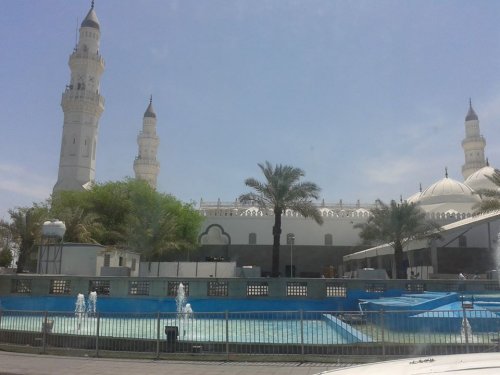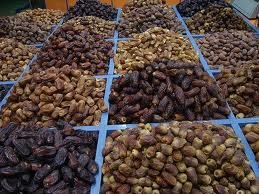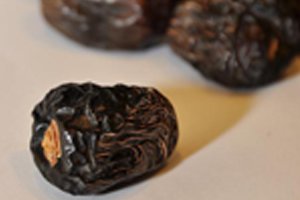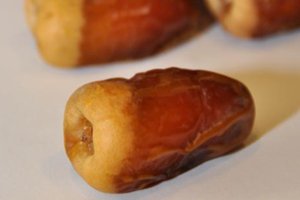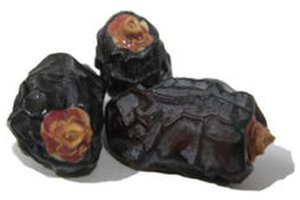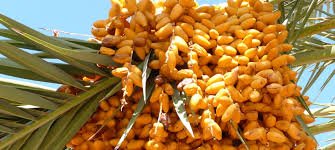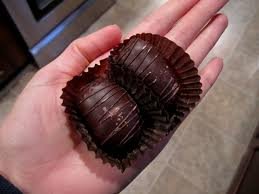-
Posts
8,434 -
Joined
-
Days Won
771
Content Type
Profiles
Forums
Events
Everything posted by ummtaalib
-
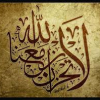
WOMEN - Covering The Face Of A Woman In The State Of Ihram Q/A
ummtaalib replied to ummtaalib's topic in Hajj/Umrah
Wearing the cap niqab during ihram Question: Assalamu Alaykum what is the ruling on wearing the cap niqab during ihram when going for umrah? if someone didnt want to wear it or is not comfortable in it is it permissible for them to wear their normal niqab and then pay some money? Answer: In the Name of Allah, the Most Gracious, the Most Merciful. As-salāmu ‘alaykum wa-rahmatullāhi wa-barakātuh. 1. It is commendable to wear the Niqab cap and cover the face without the veil touching the face.[1] 2. It is impermissible for a woman to cover the face duringIhraam.[2] If a woman covered her face with a Niqaab for one complete day or more, that will be considered as a Jinaayah(crime) for which one Damm (sacrilegious penalty) will become compulsory. If a woman had covered her face with a Niqaab for lesser than a day, she should expend some charity (Sadaqah).[3] And Allah Ta’āla Knows Best Mawlana Ismail Desai, Student Darul Iftaa Durban, South Africa Checked and Approved by, Mufti Ebrahim Desai. -
Is It Necessary That The Niqaab Of A Woman Does Not Touch Her Face While In Ihraam? Question While performing Hajj is it necessary that the Niqaab of a woman does not touch her face while she is in Ihraam?Can she give some charity if she finds this difficult? Answer In the Name of Allah, the Most Gracious, the Most Merciful. As-salāmu ‘alaykum wa-rahmatullāhi wa-barakātuh. Leaving the face uncovered is part of the woman’s Ihrām. Nabi Sallallāhu Alaihi Wa Sallam has said: “The Ihrām of a female is in her face and the Ihrām of a man is in his head.” (Sunan Ad-Dāru Qutni, Hadīth No. 2761)[1] In these times of corruption and evil, it is advisable that a woman in Ihrām covers her face in such a way that the covering cloth (niqāb) does not touch the face. That is by wearing a cap and drawing the niqāb from a distance away from the face. However if we suppose the niqāb does end up touching the face, then charity equivalent to the amount of Sadaqatul Fitr is due. And if she wears niqāb whilst touching her face for a complete day, a Damm (sacrificed animal) is due.[2] [3] And Allah Ta’āla Knows Best Checked and Approved by, Mufti Ebrahim Desai. Taken from idealwoman.org affiliate website-askimam.org http://idealwoman.org/2012/is-it-necessary-that-the-niqaab-of-a-woman-does-not-touch-her-face-while-in-ihraam/
-
What Are The Differences Between A Male And Female When Performing Hajj? Question: What are the differences between a male and female when performing Hajj? Answer: In the Name of Allah, the Most Gracious, the Most Merciful. As-salāmu ‘alaykum wa-rahmatullāhi wa-barakātuh. There are a number of differences between a male and female in Ihram and whilst performing the Hajj and Umrah rites: 1) A woman must not let any cloth touch her face and her head must be covered. However, this does not mean she should not do hijab. She should wear a veil suspended from a cap. These type of veils are available to purchase. The man must keep his head uncovered. 2) It is permissible for a lady to wear gloves. A male cannot wear gloves in the state of Ihrām. 3) A lady may wear socks and shoes. A man cannot wear socks or shoes. He must leave the instep of the foot exposed. 4) A woman will not recite the Talbiyah audibly. A man should recite the Talbiyah aloud but not to the extent that it disturbs others. 5) A woman will not perform Raml (walking briskly) when performing Tawāf. A male will perform Raml in any Tawāf which precedes a Sa’i. 6) A woman will not do Idhtibā’ (leaving the right shoulder exposed) in Ihraam) for Tawāf. A male will do Idhtibā’. 7) When performing Sa’i, a woman will not run between the two green lights. A male should run between the two green lights. 8) A woman will not shave her hair off her head (Halaq). She will only cut off one inch from her hair. A male has the discretion of either shaving or trimming 9) A female can wear her normal sewn clothes. It is not permissible for a male to dress normally in his day to day clothing in the state of Ihram. 10) A woman must not go near the al-Hajr al-Aswad (the black stone) to kiss it in peak times. A male may go on condition he does not cause others difficulty by pushing and shoving. 11) A woman should not perform her two Rak’ats Wājib Salāh after Tawāf near the Maqām Ibrahim (Station of Ibrahim) at peak times. A male may perform the two Ra’kats near Maqām Ibrahim if there is space. 12)A woman will not be penalised with a Dam penalty for leaving the Wajib of Tawāf al-Widā’ due to haidh (menstruation) or nifas (post-natal bleeding). Likewise, if she delays the performance of Tawāf al-Ziyārah and performs it after the 12th of Dhul Hijjah, she will not have to give a dam penalty for delaying. And Allah Ta’āla Knows Best With Compliments~ www.darulfiqh.com
-
Please Note: If any pictures or other information is found to be incorrect, please advise us with source of correct information Jazaakumullaah
-
Please Note: If any pictures or other information is found to be incorrect, please advise us with source of correct information Jazaakumullaah
-
-
-
http://www.zawaj.com/askbilqis/nabi-booti-plant-to-help-conceive/ Anyone have any information on this?
-
Places of the Battles (3) Battle of Ahzaab (Battle of the Trench) Ahzaab (The Battle of the Trenches) Diagram showing the position of the Trenches The site of the Battle of Ahzaab In 5AH the Quraysh, with the help of the tribe of Ghatfaan and other tribes along with the Hypocrites and the Jews, made a great effort to destroy the Muslims. They marched toward Madeenah with Abu Sufyaan as leader with an army of 10,000 men The Prophet sallallaahu ‘alayhi wasallam was informed of the approach and he consulted the Companions. Salmaan Faarsi RA put forward a plan to dig a trench to stop the advance and the Muslims began this great task with the Prophet himself helping. The trench was 5 meters deep and 5 meters wide. Madeenah was surrounded on two sides by lava rock and the third side had palm groves. When the Allies reached Madeenah they were surprised as such techniques were not in use. They camped on the other side of the trench and this situation lasted for 27 days during which they failed to enter Madeenah.
-
Places of the Battles (2) Battle of Uhud The arrow at the top left hand corner shows Mount Uhud and the arrow at the bottom shows Masjid Nabawi The plains and the slopes of Mount Uhud where the battle took place This is a section of Mount Uhud, in front of which the second battle in Islam (the Battle of Uhud) took place in 3 AH. Of this mountain the Prophet (peace and blessings of Allah be on him) declared, “This mountain loves us and we love it.” [Muslim] Mount Rumah This small mountain in front of Mount Uhud is where the Prophet (peace and blessings of Allah be on him) had positioned archers during the Battle of Uhud with the strict instructions not to move. It was the desertion of their posts by many of the archers on thinking the battle was over that led to a reversal of fortune for the Muslims in the war. The Prophet (peace and blessings of Allah be on him) appointed 50 archers under the command of Abdullah bin Jubair (may Allah be pleased with him) and said to him, “Drive off the horses from us, lest we should be attacked from the rear. Whether we win or lose the battle stand steadily at your position. See that we are not attacked from your side.” The Cave where Prophet sallallaahu 'alayhi wasallam took rest This naturally formed cave, on the side of Mount Uhud facing Masjid-e-Nabwi is where the Prophet (peace and blessings of Allah be on him) took refuge after being wounded during the Battle of Uhud. He was carried there on the back of Talha (may Allah be pleased with him). Scene from Inside the Cave The photo below is taken from inside the cave. On a clear day the minarets of Masjid Nabawi are clearly visible. To the bottom right of this photo is where our Beloved Nabi SallAllahu alaihi wasallam would have rested his noble head. (ALMISKEENAH) Entrance of the Cave The other wonders of this retreat during such a critical time at the end of the arduous battle is that just before the final high step into the cave there is a natural flat area which is protected by a slightly higher protruding pedestal shaped rock jutting up almost like a platform, seen to the left in the photo below. The stone wall has obviously been added, making a barrier on the edge of the flat section. It was there that Umar RadhiAllahu anhu (and Allah the Almighty knows best) reportedly stood guard while the following happened. After the Sahabah RadhiAllahu anhum had carried Rasulullah SallAllahu alaihi wasallam to the cave, ensuring his comfort and safety, Abu Sufyan, the leader of the Quraish army came to just below the cave shouting up at them. He was determined to continue to spread his hatred for the Muslims. He yelled: "We have our idols Lat and Uzza whereas you do not have the likes of these". The Prophet SallAllahu alaihi wasallam from inside the cave asked the companions, “Will you not answer him?” They questioned, “And how do we answer Oh Prophet of Allah?” “Say Allah Ta’ala is the Greatest and Ever-Lasting.” They all shouted together from the mountain, with Umar RadhiAllahu anhu standing firm on that platform, “Allah Ta’ala is the Greatest and Ever-Lasting!” Finally, Abu-Sufyan said, “Today will not be like Badr”. Guided again by the Prophet SallAllahu alaihi wasallam the Sahabah RadhiAllahu anhum said, “There is no similarity. Our dead are in Paradise and yours are in the Hellfire!” Abu Sufyan turned and left. (ALMISKEENAH) Graveyard of the Martyres of Uhud Hazrat Hamzah (Radhiyallaahu 'anahu) is buried there. Below is how the Masjid over the resting place of Hamza RadhiAllahu anhu was more than one hundred years ago. But like many previous structures relating to our past it has been demolished.
-
Places of the Battles (1) Battle of Badr Water Spring of Badr Site of the battle of Badr The Ghazwah-e-Badr (Battle of Badr) was fought on 17 Ramadan, 2 AH (13 March, 624 AD) at the wells of Badr, 80 miles (130 km) southwest of Madina. It was fought between the Muslims and pagans of Makkah whose strength was three times larger than the poorly equipped Muslim Army. It was a decisive victory for Muslims with divine help. This battle is also mentioned in the Qur'an.The Qur’an describes the force of the Muslim attack in many verses, which refer to thousands of angels descending from Heaven at Badr to terrify the Quraish. It proved a milestone in Prophet Muhammad’s (PBUH) struggle with his adversaries and paved a way for spread of Islam in the Arabian peninsula. (Source: Madina Photos) Right arrow in the photo shows “Al Odoat Al Dunea” where Muslim Camp was located. Middle arrow shows the passage through which convoy of Abu Sufyan passed. Left arrow shows “Malaeka Mountain” where Angels Jebreal and Mikael were sent by Allah with 1,000 of Malaeka (Angels) to help the Muslims against disbelievers. (Source: Madina Photos) Grave at Badr
-
Glimpses from the Seerah Buhairah the Monk This ruin used to be the monastery of the Nestorian monk Buhairah/Bahira, who spotted the signs of Prophethood on the young Muhammad (peace and blessings of Allah be on him) while the Prophet was on a trade caravan on the way to Syria. When Muhammad (peace and blessings of Allah be on him) was about 12 years old, he accompanied his uncle Abu Talib on a trade journey to Syria. In a place called Busra a very interesting incident took place, which caused Abu Talib to return Muhammad to Makkah. On their trade journey they met a monk by the name of Bahira, who lived a simple life in a monastery. He had very simple provisions and lived a harsh life, surviving on the bare essentials. His diet was very simple and the clothes he wore were also coarse and well worn. He was looking outside and saw a caravan approaching. His residence was on the main caravan route and he regularly saw caravans passing by, carrying different goods destined to be sold in the great markets of Syria. He noticed that this caravan was different; there was something special about it. He decided to invite the people to a meal and find out more. Bahira sent a message to the caravan that his hospitality was extended to all the members of the caravan. The caravan traders accepted the invitation and arrived at the monk’s place. When they arrived, Bahira searched their faces looking for something. He said that he had offered his hospitality to everyone, was there anyone left behind? They said that they had left a young boy called Muhammad to look after the camels. Bahira insisted that they send someone to get Muhammad and bring him to the entertainment. When Bahira saw the face of Muhammad he was delighted for he was aware from the scriptures of the arrival of a mighty prophet and he could see the signs on the young boy. After the food, Bahira approached Abu Talib saying that Muhammad would be a great prophet one day. He said that when he had seen the caravan in the distance there was a cloud hanging over them, which was shading them from the great heat of the desert. When the caravan had stopped under a tree the cloud had also stopped above them. Bahira said that he had seen the stones and the trees prostrating to Muhammad as he had been walking by. They only do this for a prophet of Allah. He looked at the Muhammad’s back and noticed the seal of the prophets, which was an oval shape protruding just below Muhammad’s shoulder blades. He said that this was one of the signs of a great prophet to come that was taught to them in their books. Bahira said “This is the master of all humans, Allah will send him with a message which would be a mercy to all humans”. Bahira advised that Muhammad should be taken back to Makkah at once, if the Jews found out about Muhammad they would try to kill him. Abu Talib took the advice of this wise old monk and sent Muhammad back with some of the guides. (IslamicLandmarks.com) The Only Living Sahabi! (I'm not sure how true this is. If anyone has any more information on it please post) The last Sahabi alive. This is how they call this tree, located in the inhospitable desert in northern Jordan, is known as. A caravan going to Syria sat down under its shadow. Muhammad (sallallaahu 'alayhi wasallam), the future Prophet of Islam, was travelling with the caravan. He was a young lad accompanying his uncle Abu Talib. This is when Buhairah the Monk recognised him. He was impressed to realise that a little cloud was moving over the heads of some of the travellers, protecting them from the scorching sun. He was also very surprised to see that the branches of the tree sink down to the caravan that sat down to have a rest under its crown. Journey to Taif View of the winding road towards Taif Only an hour from Makkah, Taif, Saudi Arabia, is a beautiful town set high in the mountains, with a lot of parks and greenery. In Saudi Arabia, roses are synonymous with the city of Taif, which is internationally famous for agriculture and in particular the cultivation and production of roses, dating back to 100 years. Because of its higher (and cooler) altitude as well as the majestic backdrop of mountains. Taif is a popular summertime vacation destination in the Kingdom. The Year of Sorrow was the year the Prophet’s uncle, Abu Talib and his wife, Khadijah died. However, it was also the year the Prophet went to Taif to pass on dawah to them, as it was his given duty, the prophet went to Taif after the death of his wife and uncle. The prophet was about 50-51 years old. They were two tribes in Taif, Taqif and Hawazin who worshipped very, very strongly in an idol called Al-Lat. The people were rich and proud and most wealthy people went to Taif on holiday. The prophet went to Taif with his adopted son Zaid. The people of Taif were worse than the people of Makkah and when Muhammad (SAW) and Zaid went to the leaders of Taif they mocked them and throw stones at them until they bled. The children made fun of them and chased them away the Prophet did not say anything to them but left quietly. For he and been informed of these people by Allah, who had told him he would be cast astray by his own people and that the rich people would not follow him. “We have not sent not any town a warner and the proud habitants declare. We shall not believe in and we shall not be punished.” (Sa’ba V34-35) The Prophet (PBUH) sat outside Taif next to vineyard and raised his hands in du’aa. He said to Allah that he did not have any manpower, money nor any respect. But he did not want it as long as he had Allah’s mercy. He (PBUH) did not want Allah be angry with him. (This shows how much the Prophet (PBUH) felt for his people, how much he wanted for them to be Muslim and sent to paradise.) Allah sent an angel down who asked Muhammad (SAW) if he wanted the two mountains surrounding Taif to crush the people. However, the Prophet (PBUH) said no, leave them just in case they become Muslim, which they did, 10 years later. Today all of Taif is Muslim!
-
Mountains of Madinah Munawwarah Mount Uhud Mount Uhud, in front of which the second battle in Islam (the Battle of Uhud) took place in 3 AH. Of this mountain the Prophet (peace and blessings of Allah be on him) declared, “This mountain loves us and we love it.” [Muslim] Mount Dhubab Mount Dhubab (also known as Mount Ra’yah) is where a famous miracle took place during the digging of the trench. The Prophet (peace and blessings of Allah be on him) struck a large rock which was reduced to pieces and emitted a light. Upon this the Prophet (peace and blessings of Allah be on him) gave the Muslims the glad tidings of the coming victories over Syria, Persia and Yemen Mount Ayr Jabl Ayr (Mount Ayr) is the second largest mountain in Madinah after Uhud and marks the southern boundary of Madinah. The Prophet (peace and blessings of Allah be on him) described it as a mountain of Hell. The Prophet (peace and blessings of Allah be on him) declared, “Uhud is a mountain which loves us and which we love, it is upon the Gate of Heaven” adding, “And Ayr is a place which hates us and which we hate, it is upon the Gate of Hell.” ‘Ayr’ means a ‘wild ass’, whereas Uhud is derived from Ahad, meaning ‘one’, — so called because it is fated to be the place of victory to those who worship one God. The very names, say Muslim sages, make it abundantly evident that even as the men of Al-Madinah were of two parties, friendly and hostile to the Prophet (peace and blessings of Allah be on him), so were these mountains. References: Pilgrimage to Al-Madinah and Mecca
-
The Jewish Tribes of Madinah Site of the Banu Qaynuqah This is the remains of one of the forts of Banu Qaynuqa who were one of three main Jewish tribes living in Madinah at the time when the Prophet (peace and blessings of Allah be on him) emigrated there. They were the first of the Jewish tribes to break the peace treaty with the Muslims and were expelled from Madinah in the middle of Shawwal, 2AH. Site of the Banu Nadhir This site, about 1km away from Masjid Quba is where the Jewish tribe of Banu Nadhir resided. Despite having a peace treaty, they conspired against the Muslims and even made an attempt on the life of the Prophet (peace and blessings of Allah be on him). They were expelled from Madinah in 4 AH and fled to Khaiber and Syria. Site of the Banu Quraizah Bani Quraizah were a Jewish tribe who rebelled and betrayed their peace treaty with the Muslims during the Battle of the Trench. The Muslims laid siege to the tribe, this spot (where a masjid once stood) marks the place where the prophet (peace and blessings of Allah be on him) offered salat during the siege. From IslamicLandmarks.com
-
Fort of Ka'b bin Ashraf These are the remains of the fort of Ka’b bin Ashraf, an extremely wealthy Jewish poet who stirred up great hatred for the Prophet (peace and blessings of Allah be on him) and the Muslims.
-
Sites of the Houses of Some Sahaba (Radhiyallaahu 'anhum) Site of Salman Farsi's (Radhiyallaahu 'anhu) House The Garden of Salman Farsi The above picture shows the land on which the Prophet (peace and blessings of Allah be on him) planted three hundred date palms to free Salman Farsi (may Allah be pleased with him) from slavery. It is located close to Masjid Quba. Site of Abu Ayyub Ansari's (Radhiyallaahu 'anhu) House This is the approximate spot where existed the house of Abu Ayyub Ansari (may Allah be pleased with him). This is where the Prophet (peace and blessings of Allah be on him) initially stayed for several months on his migration to Madinah, while Masjid-e-Nabwi and the adjoining rooms for his wives were being built. When the Prophet (peace and blessings of Allah be on him) entered Madinah he told the people to allow his camel to go her own way for “she is guided by Allah.” All of the Muslims desired that he would lodge with them. Finally the she-camel knelt, but the Prophet (peace and blessings of Allah be on him) did not dismount. The animal rose to its feet again, ambled ahead for some distance, and then turned back and knelt in the same place it had before. Masjid-e-Nabwi was erected on this very spot. Adjacent to the spot where the camel knelt was the house of Abu Ayyub Ansari (may Allah be pleased with him) who hurried to lift the saddle from the camel and took it to his home. The Prophet (peace and blessings of Allah be on him) remarked humorously, “A man must follow his saddle,” and went along with Abu Ayyub. Asad bin Zurara (may Allah be pleased with him) took hold of the halter, so he was allowed to take care of the camel. Site of the Garden of Abu Talha (Radhiyallaahu 'anhu) The highlighted area, which is in the rear of Masjid-e-Nabwi is the approximate spot where existed a garden at the time of the Prophet (peace and blessings of Allah be on him) that was owned by Abu Talha (may Allah be pleased with him). The Prophet (peace and blessings of Allah be on him) often visited this garden and drank the water from its well. Anas (may Allah be pleased with him) says, ‘Abu Talha owned the best gardens in Madinah, and they were more numerous than those of any other Ansari. One of his gardens was known by the name of Bir Ha, and this was his most favourite resort. It was close to the Prophet’s Masjid and the water of its well was sweet and abundant. When Allah (Glorified and Exalted is He) revealed the verse of the Quran: You will not attain unto piety until you spend of that which Ye love.” [3: 92] Abu Talha (may Allah be pleased with him) presented himself to the Prophet (peace and blessings of Allah be on him) and opened his heart, “O, Prophet of Allah! I love Bir Ha very much. As Allah wants us to spend precisely that which we love, I make over that garden to be spent in the path of Allah as you please.” The Prophet (peace and blessings of Allah be on him) was very much pleased, and remarked: “What a fine present (to Allah)! I think it would be best utilized if you distribute it among your own heirs.” Abu Talha (may Allah be pleased with him) went and acted upon the Prophet’s advice. References: Fazail-e-Aamal – Sheikh Zakariyya Kandhalvi
-
How to Clean The Heart The sin of malice and discord is serious. Even on auspicious occasions despite Allah’s abundant mercy, we always find one particular class of people that are deprived; those who harbour ill-feelings in their hearts towards others. In addition to this, some narrations state that such people’s salah is not accepted by Allah. (At-Targheeb, vol.3 pgs.455-462) Hereunder are a few prescriptions (from the hadith and advice of seniors) to remove ill-feelings from the heart: 1. Recite the following ayah in abundance: “Rabbanagh fir lana wa li ikhwaninal lazheena sabaquna bil iman, wala taj’al fee quloobina ghillal lillazheena amanu Rabbana innaka Raoofur Raheem” (Surah: 59 Ayah: 10) 2. Rasulullah (sallallahu’alaihi wasallam) said: “Offer gifts to each other, for this creates affection and removes the anger of the hearts” (Muwatta Imam Malik, see Al-Tamheed, vol.15 pg.85-91 & Takhreejul ihya, hadith: 1453) 3. Greet each other with Salam and shake hands. This is also a way of bonding the hearts. (Sahih Muslim, hadith: 192) 4. Rasulullah (sallallahu’alaihi wasallam) said: “By fasting during the month of Ramadhan and 3 days of every other (Islamic) month, the rancour of the heart is removed” (At-Targheeb, vol.2 pg.121) 5. Make du’a for the the person from whom one is disillusioned. 6. Praise him in his absence. By implementing the above with the sincere intent of freeing ourselves from ill-feelings, Allah Ta’ala will cleanse our hearts Insha Allah. Inspiration from a Sahabi (radiyallahu’anhu) Sayyiduna Anas (radiyallahu ‘anhu) says: “We were sitting with the Messenger of Allah (sallallahu’alaihi wasallam) when he said: “A man who is from the inmates of Jannah is about to arrive.” Soon thereafter, a Sahabi (radiyallahu’anhu) came in, with his shoes in his left hand and the water of wudhu dripping from his beard. When the gathering ended, Sayyiduna ‘Abdullah ibn ‘Amr ibn ‘As (radiyallahu ‘anhuma) followed this person (with the motive of learning the reason for him being blessed with such a glad tiding) He said to him: “I have taken an oath that I will not go home for 3 days. Is it possible for you to accommodate me for this time?” The Sahabi agreed. Sayyiduna ‘Abdullah ibn ‘Amr stayed with him for 3 days, but noticed nothing extraordinary in his routine. i.e, he never engaged in additional voluntary deeds as expected. However, whenever this Sahabi (radiyallahu ‘anhu) would go to bed at night, he would recite some form of dhikr, then sleep till fajr. Furthermore, during these 3 days he did not hear him utter any word besides good. Sayyiduna ‘Abdullah ibn ‘Amr (radiyallahu ‘anhuma) says: “After three nights I almost deemed his deeds as “nothing so special”. I approached him and explained that my real motive for staying with him was to discover the special act that he may be engaging in, which warranted his guarantee of Jannah.” Then I asked him: “How did You achieve such a rank?” He said: “I have no special deeds beside whatever You have seen during your stay.” I accepted this and was about to leave when he exclaimed: “O, Yes! there is something. I do not harbor any evil or malice in my heart against any fellow Muslim. I am not jealous over whatever good Allah bestows upon any of them.” Sayyiduna ‘Abdullah ibn ‘Amr (radiyallahu ‘anhuma) said: “That is precisely the reason for You reaching such a lofty status.” (Musnad Ahmad & Nasaai. Hafiz Ibn Katheer -rahimahullah- has declared the chain of Nasaai as authentic, in accordance to the standards of Imams Bukhari & Muslim. refer: Tafseer Ibn Katheer, surah:59, Ayah: 9) We often look for extraordinary deeds to acquire success, when the solution lies in the basics… May Allah Ta’ala guide us all. Ameen. Source: http://jamiat.org.za/blog/how-to-clean-the-heart/
-
Why I Shed Bikini for Niqab: The New Symbol of Women's Liberation By Sara Bokker Posted: 20 Zulhijjah 1427, 10 January 2007 - www.albalagh.net I am an American woman who was born in the midst of America's "Heartland." I grew up, just like any other girl, being fixated with the glamour of life in "the big city." Eventually, I moved to Florida and on to South Beach of Miami, a hotspot for those seeking the "glamorous life." Naturally, I did what most average Western girls do. I focused on my appearance and appeal, basing my self-worth on how much attention I got from others. I worked out religiously and became a personal trainer, acquired an upscale waterfront residence, became a regular "exhibiting" beach-goer and was able to attain a "living-in-style" kind of life. Years went by, only to realize that my scale of self-fulfillment and happiness slid down the more I progressed in my "feminine appeal." I was a slave to fashion. I was a hostage to my looks. As the gap continued to progressively widen between my self-fulfillment and lifestyle, I sought refuge in escapes from alcohol and parties to meditation, activism, and alternative religions, only to have the little gap widen to what seemed like a valley. I eventually realized it all was merely a pain killer rather than an effective remedy. By now it was September 11, 2001. As I witnessed the ensuing barrage on Islam, Islamic values and culture, and the infamous declaration of the "new crusade," I started to notice something called Islam. Up until that point, all I had associated with Islam was women covered in "tents," wife beaters, harems, and a world of terrorism. As a feminist libertarian, and an activist who was pursuing a better world for all, my path crossed with that of another activist who was already at the lead of indiscriminately furthering causes of reform and justice for all. I joined in the ongoing campaigns of my new mentor which included, at the time, election reform and civil rights, among others. Now my new activism was fundamentally different. Instead of "selectively" advocating justice only to some, I learned that ideals such as justice, freedom, and respect are meant to be and are essentially universal, and that own good and common good are not in conflict. For the first time, I knew what "all people are created equal" really means. But most importantly, I learned that it only takes faith to see the world as one and to see the unity in creation. One day I came across a book that is negatively stereotyped in the West--The Holy Qur'an. I was first attracted by the style and approach of the Qur'an, and then intrigued by its outlook on existence, life, creation, and the relationship between Creator and creation. I found the Qur'an to be a very insightful address to heart and soul without the need for an interpreter or pastor. Eventually I hit a moment of truth: my new-found self-fulfilling activism was nothing more than merely embracing a faith called Islam where I could live in peace as a "functional" Muslim. I bought a beautiful long gown and head cover resembling the Muslim woman's dress code and I walked down the same streets and neighborhoods where only days earlier I had walked in my shorts, bikini, or "elegant" western business attire. Although the people, the faces, and the shops were all the same, one thing was remarkably distinct--I was not--nor was the peace at being a woman I experienced for the very first time. I felt as if the chains had been broken and I was finally free. I was delighted with the new looks of wonder on people's faces in place of the looks of a hunter watching his prey I had once sought. Suddenly a weight had been lifted off my shoulders. I no longer spent all my time consumed with shopping, makeup, getting my hair done, and working out. Finally, I was free. Of all places, I found my Islam at the heart of what some call "the most scandalous place on earth," which makes it all the more dear and special. While content with Hijab I became curious about Niqab, seeing an increasing number of Muslim women in it. I asked my Muslim husband, whom I married after I reverted to Islam, whether I should wear Niqab or just settle for the Hijab I was already wearing. My husband simply advised me that he believes Hijab is mandatory in Islam while Niqab is not. At the time, my Hijab consisted of head scarf that covered all my hair except for my face, and a loose long black gown called "Abaya" that covered all my body from neck to toe. A year-and-a-half passed, and I told my husband I wanted to wear Niqab. My reason, this time, was that I felt it would be more pleasing to Allah, the Creator, increasing my feeling of peace at being more modest. He supported my decision and took me to buy an "Isdaal," a loose black gown that covers from head to toe, and Niqab, which covers all my head and face except for my eyes. Soon enough, news started breaking about politicians, Vatican clergymen, libertarians, and so-called human rights and freedom activists condemning Hijab at times, and Niqab at others as being oppressive to women, an obstacle to social integration, and more recently, as an Egyptian official called it--"a sign of backwardness." I find it to be a blatant hypocrisy when Western governments and so-called human rights groups rush to defend woman's rights when some governments impose a certain dress code on women, yet such "freedom fighters" look the other way when women are being deprived of their rights, work, and education just because they choose to exercise their right to wear Niqab or Hijab. Today, women in Hijab or Niqab are being increasingly barred from work and education not only under totalitarian regimes such as in Tunisia, Morocco, and Egypt, but also in Western democracies such as France, Holland, and Britain. Today I am still a feminist, but a Muslim feminist, who calls on Muslim women to assume their responsibilities in providing all the support they can for their husbands to be good Muslims. To raise their children as upright Muslims so they may be beacons of light for all humanity once again. To enjoin good--any good--and to forbid evil--any evil. To speak righteousness and to speak up against all ills. To fight for our right to wear Niqab or Hijab and to please our Creator whichever way we chose. But just as importantly to carry our experience with Niqab or Hijab to fellow women who may never have had the chance to understand what wearing Niqab or Hijab means to us and why do we, so dearly, embrace it. Most of the women I know wearing Niqab are Western reverts, some of whom are not even married. Others wear Niqab without full support of either family or surroundings. What we all have in common is that it is the personal choice of each and every one of us, which none of us is willing to surrender. Willingly or unwillingly, women are bombarded with styles of "dressing-in-little-to-nothing" virtually in every means of communication everywhere in the world. As an ex non-Muslim, I insist on women's right to equally know about Hijab, its virtues, and the peace and happiness it brings to a woman's life as it did to mine. Yesterday, the bikini was the symbol of my liberty, when in actuality it only liberated me from my spirituality and true value as a respectable human being. I couldn't be happier to shed my bikini in South Beach and the "glamorous" Western lifestyle to live in peace with my Creator and enjoy living among fellow humans as a worthy person. It is why I choose to wear Niqab, and why I will die defending my inalienable right to wear it. Today, Niqab is the new symbol of woman's liberation. To women who surrender to the ugly stereotype against the Islamic modesty of Hijab, I say: You don't know what you are missing. Sara Bokker is a former actress/model/fitness instructor and activist.
-
Q. What is the Ayat e Karimah and why do people read it? is there any virtue to it? (Question published as received) A. The last portion of the 87th verse in Surah al-Ambiyaa’ is known as the Ayah Karimah. It is knowns as the Ayah Karimah due to its virtue and benefits. The Ayah Karimah is follows: لَا إِلَهَ إِلَّا أَنْتَ سُبْحَانَكَ إِنِّي كُنْتُ مِنَ الظَّالِمِينَ Transliteration: La Ilaaha Illa Anta Subhaanaka Inni Kuntu Minazzhaalimeen Translation: There is no god but You. Pure are You. Indeed I was among the wrongdoers (Surah al-Ambiyaa’, Verse: 87) عن سعد قال قال رسول الله -صلى الله عليه وسلم- « دعوة ذى النون إذ دعا وهو فى بطن الحوت لا إله إلا أنت سبحانك إنى كنت من الظالمين. فإنه لم يدع بها رجل مسلم فى شىء قط إلا استجاب الله له ». Sayyiduna Sa’ad (Radiyallahu Anhu) narrates that Rasulullah (Sallallahu Alaihi Wasallam) said, “The Du’a that Zunnoon (Yunus Alaihis Salaam) made when he was in the belly of the fish was: لَا إِلَهَ إِلَّا أَنْتَ سُبْحَانَكَ إِنِّي كُنْتُ مِنَ الظَّالِمِينَ If a person recites this Dua for any need of his, Allah will answer his need” (Tirmizi, Hadith #: 3845) And Allah Knows Best Mufti Suhail Tarmahomed Fatwa Department Jamiatul Ulama (KZN) Council of Muslim Theologians
-
Masaajid in & Around Madinah Masjid Qiblatain Fountain Masjid Qiblatain (Mosque of the Two Qiblas). It is historically important to Muslims as this is where in Rajjab 2 AH the revelation of the Quran came to change the direction of the qibla from Bait-al-Maqdis in Jerusalem to the Ka’bah in Makkah. During his time in Makkah, the Prophet Muhammed (peace and blessings of Allah be on him) used to pray towards Bait-al-Maqdis, with the Ka’bah in front of him. When he migrated to Madinah, he prayed towards Jerusalem for 16 months, but he hoped it would be changed to the Ka’bah. During Dhuhr prayer or it was said that it was Asr, the Prophet (peace and blessings of Allah be on him) had led his Companions in praying two rak’ahs , when he was commanded to face towards the Ka’bah by the following revelation in the Quran in Surah al-Baqarah:“Verily, We have seen the turning of your (Muhammed’s) face towards the heaven. Surely, We shall turn you to a Qiblah (prayer direction) that shall please you, so turn your face in the direction of Al-Masjid Al-Haram (at Makkah). And wheresoever you people are, turn your faces (in prayer) in that direction.” [2:144 ] The Prophet (peace and blessings of Allah be on him) turned around towards the Ka’bah and the Sahabah copied out of obedience. Thus the Ka’bah became the new qibla of the Muslims for all time to come. (islamiclandmarks.com) Masjid Quba Recent Picture after Renovations (August 2013) Masjid al-Quba (مسجد قباء) or Quba’ Masjid) in Madinah, is the oldest mosque in the world. Its first stones were positioned by Prophet Muhammad (PBUH) on his emigration from Makkah to Madinah and the masjid was completed by his companions. Prophet Muhammad (PBUH) used to go there every Saturday and offer a two rak’ah prayer. He advised others to do the same, saying, “Whoever makes ablutions at home and then goes and prays in the Mosque of Quba, he will have a reward like that of an ‘Umrah.” This hadith is reported by Ahmad ibn Hanbal, Al-Nasa’i, Ibn Majah and Hakim al-Nishaburi. Masjid Jumu'ah The first Jumu'ah (Friday) Salaah was performed at this Masjid. After leaving Masjid Quba on Friday, Rasoolullaah sallallaahu 'alayhiw asallam performed Jumu'ah Sallah a mile away at this place before leaving for Madintul Munawwarah. Hence a Masjid was established at this place Masjid Ejabah The significance of Masjid Ejabah (also known as Masjid Mu’awiyah) is that it is the location where the Prophet (peace and blessings of Allah be on him) supplicated to Allah (Glorified and Exalted is He) three times with Allah (Glorified and Exalted is He) answering two of his requests, but forbidding the third. The Arabic word ‘ejabah’ in english closely means ‘responding’. Aamir bin Sa’ad (may Allah be pleased with him) reported on the authority of his father that: One day Allah’s Messenger (peace and blessings of Allah be on him) came from Aaliya and passed by the mosque of Banu Mu’awiyah. He went in and observed two rak’ahs there and we also observed prayer along with him and he made a long supplication to his Lord. He then turned to us and said: “I asked my Lord three things and He has granted me two but has withheld one. I asked my Lord that my Ummah should not be destroyed by through famine and He granted me this. And I asked my Lord that my Ummah should not be destroyed by drowning (by deluge) and He granted me this. And I asked my Lord that there should be no bloodshed among the people of my Ummah, but He did not grant it.” [Muslim] References: Pictorial History of Madinah Munawwarah – Dr.Muhammad Ilyas Abdul Ghani, AlMiskeenah.com Masjid Sabaq The main picture above shows the approximate area where in the time of the Prophet (peace and blessings of Allah be on him) horses were trained for the purpose of fighting in the cause of Allah. A masjid called Masjid Sabaq (inset) was once erected here but has now been removed. The place of Masid Sabaq is about 520m north-west of Masjid-e-Nabwi. According to some reports this area is where the Sahabah would play games of throwing watermelon rinds to each other and where the Prophet (peace and blessings of Allah be on him) and Aisha (may Allah be pleased with her) would sometimes race with each other. This area was the starting point of horse races which had two finishing points, the first being at the locality of Banu Zuraiq (near Masjid Ghamama) and the further one at Hafyaa, about 10 km from Masjid-e-Nabwi. (IslamicLandmarks) Masjid Ghamama This masjid, located about 300m south-west of Masjid-e-Nabwi is known as Masjid Ghamama. It is built on the site where the Prophet (peace and blessings of Allah be on him) performed the Eid salah during the last years of his life. This masjid is also known as Masjid Eid. According to some reports the Prophet (peace and blessings of Allah be on him) performed the Eid salah here during the last four years of his life. This is also the location where the Prophet (peace and blessings of Allah be on him) performed Salatul Istiskah (a special salah for invocation of rain). The word Ghamama means clouds which suddenly appeared and brought rain after the Prophet (peace and blessings of Allah be on him) has performed the prayer. (IslamicLandmarks) More to be added inshaAllah...........
-
Dates Market The dates of Madinatul Munawwarah are not only a beautifully rich and a sweet delight, but also contain great benefits as described by the Messenger of Allah sallallaahu 'alayhi wasallam. Ajwa These dates are called Ajwa, exclusive to the sacred City of Madinah and grown from its blessed soil. Sayyidina Saud narrated that the Beloved Messenger said, “If somebody takes some Ajwa dates every morning, he will not be affected by poison or magic on that day till night.” (Another narrator said seven dates). [bukhari, Book 71, Hadith no. 663] Other Popular Dates Suqaey Safawi Some like them Fresh & some like them Covered in Chocolate & Nuts!
-
The ultimate destination You are the luckiest person in the world. Allah has invited you personally to His House. What is Hajj? Hajj in the Arabic language means aim, destination or purpose (qasd). The reason is clear: Hajj is the ultimate journey of loving submission (‘ubudiyah) and conscious surrender (riq) to Allah. Its ultimate destination is your encounter with the House of Allah (Bayt al-Allah) – the Ka`bah – with both your physical body and, more importantly, your heart (qalb). Ibn al-Jawzi (rahimah al-Allah) relates a story of an old, blind woman who was journeying to Hajj years ago with a caravan. Throughout the journey, she keeps asking: “Are we at the house of my Lord?” Time and again, she is told, “No, mother, we are not there yet.” As the caravan nears Makkah, she is informed that they are almost there. Finally, they enter Masjid al-Haram. She is led to the Ka’bah. Touching the Ka’bah, she cries, “Baytu rabbi? The House of my Lord?” Weeping, she clings to the cloth of the Ka’bah – and dies. The woman realized with her heart (qalb) the true significance of visiting the House of her Lord. Allah has invited you to His House, which He has called the al-Bayt al-‘Atiq – the ancient, liberated and liberating house. Your journey is one of freedom and liberation. For as your body leaves its material house to journey to Allah’s House, your heart is meant to disengage from the lower self (nafs), the shaytan, and the world (dunya) and journey to Allah. The ultimate reward for a Hajj mabrur is to return home with the purity of a newborn child. What could be a greater incentive! But beware, for Hajj is a selective process. Only a few will attain a Hajj mabrur, which is a Hajj performed correctly, without any disobedience to Allah and without indulging in any argumentation. Be prepared. Be vigilant. Be focused. This will be one of the greatest – and sweetest – struggles of your life. And though you will long and dream for the rest of your life to come back, you may never return again. May Allah allow our bodies to journey to His House; may He permit our hearts to find Him, the Lord of the House. Ameen. The most sacred space You will be journeying from your earthly house to Makkah, your spiritual home, the most beloved place to Allah in all of space and time. Allah himself has decreed it to be so since the beginning of creation. There is no place more blessed, more beautiful, more virtuous, more exalted than Makkah. Every inch and every corner of Makkah is a haram, a sanctuary made sacred by Allah. The more you revere Makkah, the more you will be ennobled by Allah. We must take the greatest of care to never think casually of our sojourn in Makkah or live within its precincts in disobedience or negligence. Some reports teach that it was in Makkah that our father adam (‘alayhi al-salam) longed to go back to paradise and be in the presence of Allah. To console his loneliness, Allah commanded him to do tawaf around the space of the current Ka‘bah. And adam did, and felt whole again. Other texts teach that Nuh (’alayhi al-salam), Ibrahim (’alayhi al-salam), and many Prophets before them (’alayhim al-salam), all did tawaf around Allah’s sacred House. Their spiritual energy and legacy fills the air. You will be walking in the footsteps and the heart-steps of Rasulullah (sallalahu ’alayhi wasallam) and his noble companions. Shelter, solace and sight Hajj and its rites are described in various and powerful ways by Allah and his Rasul (sallalahu ’alayhi wasallam). Through these descriptions, we gain insight into the deeper meanings of Hajj. The rites of hajj are described, for example, as manasik, masha‘ir and mashahid. Mansak (plural manasik), usually translated as ritual, connotes shelter (maskan) and tranquility (sukun). The rites of Hajj are residences of shelter and tranquility for the heart. Mash‘ar (plural masha‘ir) connotes feeling and experience. The rites of Hajj cause the heart to feel and experience the sweetness of nearness to Allah. Mashad (plural mashahid) is to witness with the heart the blessings of Allah at every station – to see, with one’s inner sight, Allah’s will as the Decreer of decrees and the Causer of causes. Each word connotes a different inner dimension of Hajj, as the movement, not only of your body or limbs, but of your heart. For as your body journeys from one place to another, so too must your heart travel through various stations (maqamat), each of which will provide it with shelter, solace and inner sight. Become angelic Hajj is your chance to become an angel and to live with the delight of an angel. In tawaf, you will be mirroring the worship of the angels, the mala’ikah, those heavenly creatures created of pure light and enveloped in the worship of Allah. Texts teach that the Ka‘bah is connected in an imperceptible way to the Bayt al-Ma‘mur, the heavenly Ka‘bah of the angels, around which they are constantly in tawaf. Seventy thousand angels perform tawaf around this house and are replaced with others, never to return. Around the Ka‘bah, we are in a heavenly dimension. Near the Ka‘bah are the Hajar Aswad, or black stone, and the Maqam Ibrahim, both gems from jannah. We are taught that the hajar was darkened by the sins and transgressions of man. Its heavenly light is now folded from us. The hajar will be rendered into a person in the afterlife by Allah and will witness on behalf of those who approached it with truth and sincerity. The hajar can be said to take a picture recording of your heart as you stand before it. Kissing the hajar is the most profound renewal of your covenant with Allah and a pledge of love, dedicated obedience and soulful allegiance to Him. THE JOURNEY BEGINS Entering into Ihram As you near the miqat, your heart will tremble and tremor. Is this really happening? Is my heart getting closer and closer to His House? Soon you will enter Allah’s haram. It is only fitting that you enter into a state, both externally and internally, that justly corresponds to this honour. Beyond the miqat, there is only talbiyah. The essence of Hajj is the journey of our hearts away from the house of our lower selves (nufus) with its passions (shahawat), inclinations (ahwa’) and attachment to the created world (khalq) to the haram and, ultimately, the House of Allah. We must leave our attachments to receive the greatest connection. We must leave to arrive. Ihram is from haram. Both meanings, to be sacred and to be forbidden, are carried in it. Through the ihram, the heart is meant to leave the temporary and the finite – to make it, in a sense, “forbidden” – and to prepare for the sacred audience of Allah’s presence. The muhrim has disengaged from everything and anything that distracts him or her from Allah and, consequently, from remembrance, peace and stillness. The muhrim has left his or her home taking taqwa or Allah-consciousness, the best sustenance, as a provision. Beginning Talbiyah One enters into ihram with talbiyah. Talbiyah is the heart’s most profound surrender to the invitation and call of Allah: Here I come to You, my Lord, here I come – fully and forever. With the talbiyah, we proclaim that no associate (sharik) or attachment will distract us from seeking Allah. Our hearts will not see, hear, obey, or be lured to another, besides Him. The recitation of this talbiyah is to be said with constancy and conviction, and not intermittently and infrequently.Talbiyah is essential to focusing our hearts. It will remind us of the purpose of our journey; it will facilitate us in foregoing our rights, demands and expectations while yet rendering fully the major and minor rights of others; it will dispel distractions; and it will make all obstacles easy, even pleasurable. There is no praise (hamd) and no dominion and power (mulk) except that Allah owns it. Everything, whether tangible or intangible, belongs to Him. In fact, we are in praise of Him by Him. Mina Mina, or Muna, means desire, hope, longing. Some texts teach that it was in Muna that adam ( ‘alayhi al-salam) longed and desired to journey back home to paradise and to be, once again, in Allah’s presence. It is in Muna that the journey begins. The day spent in Muna, termed the day of tarwiyah (meaning, in part, to quench, to drink to one’s fill), is meant for our heart to focus on the aim of their journey, to gather in resolution and focus, and to begin our inner momentum towards the House of Allah. ‘Arafat ‘Arafat means to know, to understand. Another verb scale conveys the meaning of perfuming, making fragrant, scenting. ‘Arafat is the essential pillar (rukn), of Hajj; without ‘Arafat there is no Hajj. ‘Arafat is the cleansing station outside the haram where we stand and seek forgiveness for all that we’ve committed in our lives. We beg and implore Allah to make us worthy of entering into His haram, visiting His House and being in His presence. Here, on ‘Arafat, we learn two things. As we acknowledge our disobedience, our sins, our rebelliousness and our forgetfulness, we know our unworthiness as true servants. We reveal everything to Allah, minor or major, Who knows already but simply wants us to admit with true transparency and sincerity what we are inside of our selves. Moreover, we begin to know the all-enveloping knowledge, the inestimable mercy, the boundless generosity and the limitless grace of Alah in forgiving and effacing our sins. Who is it, beside Him, that can forgive and that does forgive? There is no refuge or flight from Allah except to Him. Allah celebrates, in the presence of the angels, the hujjaj on ‘Arafat asking for forgiveness. And He affirms to the angels that, yes, He has forgiven them. Now, as the sun begins to set, you continue, perfumed and scented with the purity of Allah’s grace and forgiveness, ever closer to His haram. Muzdalifa Muzdalifa, from the Arabic root izdilaf, means to approach, to get closer. Muzdalifa is a second station of cleansing and purification. The pilgrim is now closer to the Ka‘bah. We remain in supplication (du‘a’) after fajr, imploring Allah again for pardon and guidance. Some scholars have said that in Muzdalifa, Allah also forgives our violations against the rights of others. Such violations are not usually forgiven unless, in addition to seeking forgiveness, we remedy what has been violated. Mina and the casting of the pebbles During the Hajj of Ibrahim (‘alayhi al-salam), he was commanded to sacrifice his son. Allah, of course, never intended that the slaughter take place. Allah wanted, instead, to purify and free Ibrahim (‘alayhi al-salam) from every love and every attachment besides Him. It was in Muna that the shaytan attempted to waylay Ibrahim (‘alayhi al-salam) from sacrificing his son. Ibrahim (’alayhi al-salam) casted pebbles at the shaytan to reject his designs and prompting. In casting the pebbles, the pilgrim affirms Allah’s greatness over everything and covenants with Allah that he or she will never regress to anything which displeases Him. Casting the pebbles is the casting away of shaytan, the lower self (nafs) with its desires, inclinations and evil, and, ultimately, casting away everything besides Allah. The pebble is meant, not to hit the pillar, but to fall inside the container, or majmar, where it will remain. The fire of the nafs, its impetus to evil, must be cast out, contained and confined. Our nafs must be jailed for us to become free. After the nafs is jailed by the casting of the pebbles, it is slaughtered. The sacrifice of the animal signifies the slaughter of the nafs by Ibrahim (‘alayhi al-salam). Ibrahim’s (‘alayhi al-salam) sacrifice was momentous: he sacrificed his very will. Ibrahim was named the Khalil (cherished friend) of Allah because his love for Allah pierced and consumed his entire heart. The hair – signifying status, station and pride – is now shaved. Whatever remaining trace and residue of the disobedient nafs is now completely cleansed. Now, the pilgrim is welcomed by Allah to visit His Haram and His House. He or she is now freed from ihram, but not completely. Washing and the use of perfume are now permitted; intimate relations are not. Approaching one’s spouse is unbefitting considering that now the pilgrim is going to visit the Host. Tawaf al-Ifadah Ifadah means to flood, to rush, to move. The movement from ‘Arafat to the haram is called ifadah. The rite of tawaf that takes place after the casting of the pebbles, the sacrifice and the shaving of the head is likewise termed Tawaaf al-Ifadah. The heart (qalb), cleansed and purified from its attachments, inundated with love, desire and longing, floods to the haram, to the House, and to its Lord. There, it circumambulates the House and renews its pledge of complete and loving submission. Sa‘i between Safa and Marwa Sa‘i means to work, to strive, to act. We remember in sa‘i the actions of Hajar (‘alayha al-salam) as she climbed, walked and ran up both Safa and Marwa looking for sustenance for her starving child. The miracle of Zam zam was gifted to Hajar for her efforts and sincere reliance. Rasulullah (sallalahu ‘alayhi wasallam) teaches that if we drink zam zam with firm faith and certainty, Allah will most definitely answer our supplication. As servants of Allah, we are embedded in time and space. We must act, all the while cognizant that it is Allah who creates both cause and effect. To see waves upon waves of pilgrims walking and running between Safa and Marwa is to recognize that the reality of our life is constant sa‘i between struggle and reward, struggle and reward. On the hills of Safa and Marwa, where the pilgrim alights in reflection and supplication, the heart exalts, seeing Allah’s power in all matters, yours and others, large or small. The days and nights of Mina During our stay in Mina, we re-affirm and re-declare our desire and hope for spiritual freedom by casting pebbles for three days. Each casting of the pebbles cements our resolution to contain and confine both the lower self (nafs) and shaytan. You remain in Muna as Allah’s guest. Here, we must eat and drink with the consciousness of a guest in front of a Most-Magnanimous Host. The greatest nourishment during these days, as Allah himself indicates, is His dhikr, or remembrance. We are destined to leave but Allah intends we leave gradually, in gratitude to Him, remembrance of Him and gathering a firm resolution for permanent change when we depart. Then the last pebble is cast. Our final farewell is imminent. The farewell Most have waited their entire lives for the encounter with the House of Allah. Many will never return. In truth, there is no certainty that any of us will ever gaze on the Ka‘bah again. Whether we return or not, we will never forget. It is said – and it is true – that the Ka‘bah beckons you from afar, then haunts you forever. It is related that Ibn ‘Abbas prayed this as his final farewell, clinging with his entire being to the multazam, the wall of the Ka‘bah between the hajar and the door: “O Allah This House is Your House And this servant is Your servant, and the son of Your servants You have carried me here on what You have made accessible to me of Your creation Until You have made me reach, by Your grace, Your House And You have helped me fulfill my rites of Hajj (O Allah) If You have been pleased with me, then be more pleased with me And if You are not pleased with me, then I implore you to be generous to me now – Before my house becomes distant from Your house For now it is time for my departure, if You permit me – Never to exchange You for anything else, nor Your House for any other house Not being desirous of others instead of You, nor of any other house besides Your House O Allah, Grant me safety and good health in my body, protection in my religion and allow me a beautiful return And provide me with deeds and acts of Your obedience for as long as You grant me life And gather for me the best of this world and the next For truly You have power over all things.” A mother once told her son that the Ka‘bah says: The one who does not see me will never rest; and the one who sees me will never rest. May our hearts find their ultimate rest by journeying to Allah long after our bodies have returned from Hajj. May we always be in Hajj. Hajj mabrur, my beloved brother and sister. Source: www.duai.co.za Haqislam.org
-
The Holy Kaaba has been draped over the ages......... Even today in Makkah the years old ritual is being practised with full enthusiasm. The holy Kaaba is covered with new kiswa (cover) every year on the 10th Dhul Hijjah, which coincides with Haj. Every year the old Kiswa is removed, cut into small pieces and gifted to certain individuals, visiting foreign Muslim dignitaries and organisations. Some of them sell their share as souvenirs of Haj. Earlier Umar bin al-Khattab(radiyallahu anhu) would cut it in to pieces and distribute them among the pilgrims who used them as shelter from the heat of Makkah. The present cost of making the kiswa amounts to SR 17 million. The cover is 658 sq. metres long and is made of 670 kgs of pure silk. For embroidery 15 kilos of gold threads are used. It consists of 47 pieces of cloth and each piece is 14 Metres. long and 101 cms broad. The kiswa is wrapped around the Kaaba and fixed to the ground with copper rings. Traditionally the pattern of kiswa has not changed. The material is made up of silk and a gold embroidered band is sewn about three fourth the distance from the bottom. The part covering the door, which stands 2.13 metres above the ground on the north-east side wall, is covered separately with richly embroidered Quranic verses, leaving an opening for the black stone. The colour of Kiswa kept changing during the reigns of different Caliphs and rulers. In earlier days the kiswa was changed on 10th of Muharamm but slowly it was shifted to 10th of Dhul-Hijjah. Amir Maawiya(radiyallahu anhu) started to cover it on 10th Muharram (first month of Muslim calendar) as well as on Idd ul-Fitr (Ramadan). In olden days different clans of Makkah would cover the Kaaba by turns yearly. Tribal leaders would also bring small drapes to cover the walls of Kaaba. Once the grand mother of Prophet Mohammed (sallallahu alaiyhi wassallam) had offered a white Kiswa. Prophet Muhammed(sallallahu alaiyhi wassallam)) used the Kiswa made of Yemeni cloth. Caliphs Umar(radiyallahu anhu) and Uthman(radiyallahu anhu) covered it with an Egyptian white cloth, Qubati. Haroon Al-Rasheed used a white Kiswa. The cloth would come from Baghdad, Egypt and Yemen depending on whose influence was greater in Makkah. Viceroy of Egypt Mohammed Ali Pasha after splitting from the Turkey Empire, made making of the Kiswa the state responsibility. The Kiswa was brought by annual caravan from Cairo. Nassir Abbasi (1160-1207) started using a green Kiswa and later shifted to black, since then the black kiswa has become the tradition. Earlier the Kiswas were plain. Only in 1340 the embroidery border tradition was introduced by the Egyptian ruler Hassan. During World War I Turkey joined Germany and there were doubts that will it be possible to bring the Kiswa from Egypt. So Turkey organised a very grand Kiswa from Istanbul and by Hejaz Railway it was sent to Madinah. But the Kiswa from Egypt reached Makkah in time, so the Istanbul Kiswa was kept back in Madinah. In 1923 when the relations of Sheriff of Makkah and Egypt were sour, the Egyptians called back their Kiswa which had reached Jeddah by that time. That year the Istanbul Kiswa lying in Madinah was utilised. Ibn Saud used the Kiswa made in Iraq. In 1926 a factory was set up at Makkah by Late King Abdul Aziz to make the Kiswa. Initially all the craftsmen were brought from India. It took more than 100 craftsmen the whole year to weave the cloth on ancient wooden handlooms and to embroider it in magnificent calligraphy. In 1937 the factory was closed down due to non availability of modern machinery. The factory was re-opened after a long gap in 1962. Making of the Kiswa is an interesting process and done in different stages. The best silk is imported from Italy and Germany. With the help of special detergents and special olive oil soaps the silk is washed to remove its protective wax. The silk is exposed to high temperatures of 90c and washed several times to get its natural colour. The best results of dyeing are achieved on the natural colour. Ten years before, dyeing was done manually and now it is being done through specialised machines. Later weaving is done. In the beginning the belt of the Kaaba had 8 pieces and later it was doubled. In 1971 two additional pieces of YA HAYYU and YA QAYUUM were introduced. The cover and inner layer are done in one department. Designing of Quranic verses is being computerised. Computerised designing has slowly replaced manual designing and increased the speed of work. The Making of Present Day Kiswa Silver and golden threads are used for embroidery. Embroidery threads are now made locally in Saudia Arabia, by the same goldsmith who made the door of Kaaba. Finished pieces under go strict quality control tests in the laboratory before being stitched together. Engraved with verses from the Holy Qur’an, the Kiswa is intricately woven with gold and silver threads. The Kiswa is made in many stages. After the cover is designed by well-known artists, it is colored. Intricate work includes the design of decorations, the embroidered inscriptions on the belt and the Kaaba door curtain, and the decorations on Jacquard cloth for the outer and inner cover. Next come the printing and dyeing stages. The Kiswa is later woven and embroidered. Manual weaving is done by experienced craftsmen and mechanical weaving on modern looms. The unique embroidery is achieved in several stages. First by sewing cotton thread, on the inscriptions and decorations printed on the cloth. Then comes the embroidery threads of yellow cotton. The embroidery is then covered with gold plated silver threads which protrude two centimeters above the cloth. The New Kiswa is made of approximately 670 kilograms of pure white silk and 150 kg of gold and silver. It cost more than SR17 million and is considered one of the most exquisite works of Islamic art. It is manufactured at the factory of Kiswa at Ummal-Joud, a suburb of Makkah.More than 240 employees, work in the factory. Skilled craftsmen use a combination of the latest technology, ancient looms and artistic calligraphy to produce a work of exotic beauty. Usually the new cloth is to be ready two months before Haj. Before placing the new dress, the old Kiswa is cut into pieces and presented to leaders of Muslim countries, diplomats and major institutions around the world. One such piece was presented to the United Nations. Sources: saudinfo and islamicvoice Courtesy: www.everymuslim.net
-
The small, cubed building known as the Kaaba may not rival sky- scrapers in height or mansions in width, but its impact on history and human beings is unmatched. The Kaaba is the building towards which Muslims face five times a day, everyday, in prayer. This has been the case since the time of Prophet Muhammad (peace and blessings be upon him) over 1400 years ago. The size of Kaaba: The current height of the Kaaba is 39 feet, 6 inches and total size comes to 627 square feet. The inside room of the Kaaba is 13X9 meters. The Kaaba's walls are one meter wide. The floor inside is 2.2 meters higher than the place where people perform Tawaf. The ceiling and roof are two levels made out of wood. They were reconstructed with teak which is capped with stainless steel. The walls are all made of stone. The stones inside are unpolished, while the ones outside are polished. This small building has been constructed and reconstructed by Prophets Adam, Ibrahim, Ismail and Mohammad (PEACE BE UPON THEM ALL). No other building has had this honor. Yet, not very much is known about the details of this small but significant building. Names: The other names of the Kaaba Literally, Kaaba in Arabic means a high place with respect and prestige. The word Kaaba may also be derivative of a word meaning a cube. Some of these other names include: Bait ul Ateeq - which means, according to one meaning, the earliest and ancient. According to the second meaning, it means independent and liberating. Both meanings could be taken Bayt ul Haram - the honorable house Reconstruction: The Kaaba has been reconstructed up to 12 times Scholars and historians say that the Kaaba has been reconstructed between five to 12 times. The very first construction of the Kaaba was done by Prophet Adam. Allah says in the Quran that this was the first house that was built for humanity to worship Allah. After this, Prophet Ibrahim and Ismail rebuilt the Kaaba. The measurements of the Kaaba's Ibrahimic foundation are as follows: The eastern wall was 48 feet and 6 inches the Hatim side wall was 33 feet the side between the black stone and the Yemeni corner was 30 feet the Western side was 46.5 feet. Following this, there were several constructions before the Prophet Mohammad's time. Reconstruction of Kaba by Quraish Prophet Muhammad (P.B.U.H) participated in one of its reconstructions before he became a Prophet. Since the tribe of Quraish did not have sufficient funds, this reconstruction did not include the entire foundation of the Kaba as built by Prophet Ibrahim. This is the first time the Kaaba acquired the cubical shape it has now unlike the rectangle shape which it had earlier. The portion of the Kaaba left out is called Hateem now. Construction after the Prophet's Time: Abdullah Ibn az-Zubayr The Syrian army destroyed the Kaaba in Muharram 64 (Hijri date) and before the next Hajj Abdullah Ibn az-Zubayr, may Allah be pleased with him, reconstructed the Kaaba from the ground up. Ibn az-Zubayr wanted to make the Kaaba how the Prophet Mohammad wanted it, on the foundation of the Prophet Ibrahim. Ibn az-Zubayr said, "I heard Aisha (may Allah be pleased with her) say, 'The Prophet said: "If your people had not quite recently abandoned the Ignorance (Unbelief), and if I had sufficient provisions to rebuild it [the Kaaba], I would have added five cubits to it from the Hijr. Also, I would make two doors; one for people to enter therein and the other to exit" (Bukhari). Ibn az-Zubayr said, "Today, I can afford to do it and I do not fear the people." Ibn az-Zubayr built the Kaba on Prophet Ibrahim's foundation. He put the roof on three pillars with the wood of Aoud (a perfumed wood with aroma which is traditionally burned to get a good smell out of it in Arabia). In his construction he put two doors, one facing the east the other facing the west, as the Prophet wanted but did not do in his lifetime. He rebuilt the Kaaba on the Prophet Ibrahim's foundation, which meant that the Hateem area was included. The Hateem is the area adjacent to the Kaaba enclosed by a low semi-circular wall. Abdullah Ibn az-Zubayr also made the following additions and modifications:- - Put a small window close to the roof of the Kaba to allow for light. - Moved the door of the Kaaba to ground level and added a second door to the Kaaba. - Added nine cubits to the height of the Kaaba, making it twenty cubits high. Its walls were two cubits wide. - Reduced the pillars inside the House to three instead of six as were earlier built by Quraish. For reconstruction, Ibn az-Zubayr put up four pillars around Kaaba and hung cloth over them until the building was completed. People began to do Tawaf around these pillars at all times, so Tawaf of the Kaaba was never abandoned, even during reconstruction. During Abdul Malik bin Marwan's time In 74 Hijri (or 693 according to the Gregorian calendar), Al-Hajjaj bin Yusuf Al-Thaqafi, the known tyrant of that time, with the approval of Umayyad Khalifa Abdul Malik bin Marwan, demolished what Ibn az-Zubayr had added to it from the older foundation of Prophet Ibrahim, restore its old structure as the Quraish had it. Some of the changes he made were the following: - He rebuilt it in the smaller shape which is found today took out the Hateem - Walled up the western door (whose signs are still visible today) and left the rest as it was -pulled down the wall in the Hateem area. - Removed the wooden ladder Ibn az-Zubayr had put inside the Kaba. - Reduced the door's height by five cubits When Abdul Malik bin Marwan came for Umra and heard the Hadith that it was wish of Prophet(sallallahu alaiyhi wasallam) for the Kaaba to be constructed the way Abdullah Ibn az-Zubayr had built it, he regretted his actions. Imam Malik's advice to the Khalifa Harun al Rasheed. Abbasi Khalifa Harun al Rasheed wanted to rebuild the Kaaba the way the Prophet Muhammad wanted and the way Abdullah Ibn az-Zubayr built it. But when he consulted Imam Malik, the Imam asked the Khalifa to change his mind because constant demolition and rebuilding is not respectful and would become a toy in the hands of kings. Each one would want to demolish and rebuild the Kaaba. Based on this advice, Harun al Rasheed did not reconstruct the Kaaba. The structure remained in the same construction for 966 years, with minor repairs here and there. Reconstruction during Sultan Murad Khan's time in the year 1039 Hijri, because of heavy rain, flood and hail, two of the Kaaba's walls fell down. The flood during which this occurred took place on the 19th of Shaban 1039 Hijri which continued constantly, so the water in the Kaaba became almost close to half of its walls, about 10 feet from the ground level. On Thursday the 20th of Shaban 1039 Hijri, the eastern and western walls fell down. When flood receded on Friday the 21st of Shaban, the cleanup started. Again, a curtain, the way Abdullah Ibn az-Zubayr established on 4 pillars, was put up, and the reconstruction started on the 26th of Ramadan. The rest of the walls except for the one near the Black Stone, were demolished. By the 2nd of Zul-Hijjah 1040 the construction was taking place under the guidance of Sultan Murad Khan, the Ottoman Khalifa. From the point of the Black stone and below, the current construction is the same as that done by Abdullah Ibn az-Zubayr.The construction which was done under the auspices of Murad Khan was exactly the one done at the time of Abdul Malik Ibn Marwan which is the way the Quraish had built it before Prophethood. On Rajab 28, 1377, one historian counted the total stones of the Kaaba and they were 1,614. These stones are of different shapes. But the stones which are inside the outer wall which is visible are not counted in there. Reconstruction of the Kaaba In 1996: A major reconstruction of the Kaaba took place between May 1996 and October 1996. This was after a period of about 400 years (since Sultan Murad Khan's time). During this reconstruction the only original thing left from the Kaaba are the stones. All other material has been replaced including the ceiling and the roof and its wood. Courtesy: www.everymuslim.net
-
It is definitely known that it was Ibrahim al-Khalil (peace and blessings be upon him) who built the Ka'bah. The residents around it at that time were his son, Isma'il, and the tribe of Jurhum (originally from Yemen ). It is an almost square building whose sides face the cardinal points of the compass; the winds, no matter how strong, lose their force when they strike it - without doing it any harm. The construction of Ibrahim stood intact, until it was rebuilt by al-'Amaliqah, and later by the tribe of Jurhum (or vice versa). When the management of the Ka'bah came into the hands of Qusayy Ibn Kilab - an ancestor of the Prophet - in the second century before Hijrah, he demolished and rebuilt it on firm foundation, putting a roof of doom palm timber and date-palm trunk on it. He also built 'Dar al-Nadwah' (Council House) on one side. It was the place from where he ruled and where he held counsel with his colleagues. Then he divided various sides of the Ka'bah. Among different clans of the Quraysh and each clan built their houses at the side allotted to them; and they opened their doors towards the Ka'bah. Five years before the start of the Prophet's mission, there came a flood which destroyed the Ka'bah's building. The Quraysh divided among themselves the various responsibilities connected with its reconstruction. They hired a Roman builder to build it and an Egyptian carpenter to help him with the woodwork. When the time came to fix the Black Stone, a dispute erupted as to which clan should be accorded the honor of putting the Black Stone in its place. Then they agreed to leave the decision to Muhammad (peace and blessings be upon him) who at that time was thirty-five years old, because they had full faith in his deep wisdom and sound judgment. He got his robe, and putting the Stone on it, told all the clans to hold the sides of the robe and raise it together. When the Stone reached the required height (on the eastern corner), he took it in his hands and fixed it in its proper place. But the Quraysh found their funds exhausted. So they reduced the size on one side - as it is today; thus a part of the original foundation was left out, and that is the portion known as 'Hijr Isma'il' (the Enclosure of Isma'il). The building remained in that condition until 'Abdullah Ibn Az-Zubair established his rule over Hijaz during the reign of Yazid Ibn Mu'awiyah. Husain Ibn Numair, the commander of Yazid's army, besieged him at Makkah and struck the Ka'bah with catapult. The Ka'bah was demolished, the 'Al-Kiswah' (covering of the Ka'bah) and some roof timbers were burnt down. The siege was lifted when news came of Yazid's death. Ibn Az-Zubair decided to demolish the Ka'bah completely and rebuild it on its original foundation. He got good mortar from Yemen and constructed the new building. Hijr Isma?il was re-included in the Ka'bah; the door was fixed at the level of the ground; another door was fixed on the opposite side, so that people might enter from one door and go out from the other. He fixed the height of the House at twenty-seven arms. When the building was ready, he covered the whole building with musk and perfume inside out, and put silken Kiswah on it. The construction was completed on 17th Rajab, 64 A.H. When 'Abdul-Malik Ibn Marwan came to power in Damascus, he sent his commander, Hajjaj Ibn Yusuf, who defeated Ibn Az-Zubair and killed him. Entering the Sacred Mosque, he saw what Ibn Az-Zubair had done regarding the Ka'bah. He wrote to 'Abdul-Malik about it who ordered him to return it to its previous shape. Hajjaj, therefore, demolished six and a half arms from the northern side and rebuilt it according to the plan of the Quraysh; he raised the eastern door and closed the western one; he also filled the inside with the stones that could not be re-used (thus raising the inside floor to the new level of the door). When the Ottoman Sultan Sulaiman ascended the throne in 960 A.H., he changed the roof of the Ka'bah. Sultan Ahmad (who came to power in 1021 A.H.) made some other repairs and alterations. Then came the great flood of 1039 A.H. which demolished parts of its northern, eastern and western walls. Therefore, the Ottoman Sultan Murad IV got it repaired. And the same building continues till this day. The Shape of the Ka'bah The Ka'bah is nearly square in shape, built with hard dark bluish-grey stones. It now rises to sixteen meters; but was much lower at the time of the Prophet (peace and blessing be upon him) as may be inferred from the fact that, on the day of conquest of Makkah, the Prophet raised 'Ali Ibn Abu Talib on his shoulders so that ?Ali could remove and break the idols that were placed on the roof of the Ka?bah. The wall [the northern one that faces the Enclosure of Isma'il] over which is placed the water trough and the one on its opposite side [the southern one] are ten meters and ten centimeters long; while the [eastern] wall which has the door and the one opposite to it are twelve meters long. The door is placed at a height of two meters from the ground level. The Black Stone is fixed in the [east-south] corner, so that if one wants to enter the door, the Stone would be on his left. This Stone is one and a half meters above the ground level, that is, above the level of the circumambulation area. The Black Stone is a hard rock of irregular oval shape, black with some reddish tint; it has red dots and yellow wavy lines which appeared when some broken pieces were soldered and joined. It has a diameter of about thirty centimeters. The Ka'bah's corners, since ancient days, are called "Al-Arkan (pl. of "Ar-Rukn" pillar); the northern one is called, the Iraqi Rukn; the western, the Syrian; the southern, the Yemenite; and the eastern (wherein the Black Stone is fixed), is named the Black. The area between the door and the Black Stone is called "al-Multazam" (lit.: the place where one clings to) because when one circumambulates one adheres to it for invocation and prayer. The trough fixed over the northern wall, which is called the Trough of Mercy, was an innovation of Al-Hajjaj Ibn Yusuf; in 954 A.H. Sultan Sulaiman changed that with a silver one; that too was replaced by Sultan Ahmad in 1021 A.H. with another one of enameled silver with golden designs. In 1273 A.H. Sultan 'Abdul-Majid replaced it with another one made of gold, and it is the present one. Facing the northern wall is a wall-half circle in shape. It is called, Al-Hatim. It is like a bow whose two ends face the northern [iraqi] and the western [syrian] Rukns; there is a gap of two meters and three centimeters between the ends of the bow and the said Rukns. The wall, Al-Hatim, is one meter high and one and a half meters wide. It is paneled with carved marble. The distance between the center of Al-Hatim and the center of the northern wall of the Ka'bah is eight meters and forty-four centimeters. The area covered by al-Hatim and the northern wall is known as Hijr Isma?il [Enclosure of Isma'il]. About three meters of this space was included in the Ka'bah built by Ibrahim (peace and blessings be upon him). The changes and alterations that were done inside the Ka'bah, and the rituals and Sunnah rites connected with the House are not so necessary to be described here. The Covering of the Ka'bah As for the covering of the House itself, it is said that the first to cover it was the Tubba [Tubba' - was the title of the Kings of Yemen.] Abu Bakr As'ad, who hang on it the sheets embroidered with silver threads. His successors followed this custom. Then people started covering it with sheets of various kinds - putting one upon the other. Whenever a covering looked old, a new one was put over it. This continued until Qusayy came on the scene. He imposed a tax on the Arabs for putting a new covering every year. This system continued in his descendants. Abu Rabi'ah Ibn Al-Mughirah used to put a covering one year and all the clans of Quraysh did so the next year. The Prophet (peace and blessing be upon him) covered the House with Yemenite sheets. This custom continued. When the 'Abbaside caliph Al-Mahi went for pilgrimage, the attendants of the House complained to him about the coverings that had accumulated on the roof of the Ka'bah. They said there was a danger of the roof collapsing down because of that load. The King ordered that all the old coverings should be removed and that every year a new covering should replace the old one - and that custom is followed up till now. The Ka'bah is draped from inside too. The first to do so was the mother of 'Abbas, son of 'Abdul-Muttalib - she had done so because of a vow she had taken regarding her son- 'Abbas. Prestige of the Ka?bah The Ka?bah was held in high esteem by various nations. The Hindus respected it, believing that the spirit of Siva, the third person of their Trimurty, entered into the Black Stone, when he was accompanied by his wife visiting Hijaz. The Sabaeans of Persia and Chaledonia counted it as one of their seven holy sanctuaries [The seven sanctuaries were: (1) The Ka'bah; (2) Mars - on the summit of a mountain in Isfahan; (3) "Mandusan" in India; (4) Naw Bahar in Balkh; (5) House of Ghamdan in San'a; (6) Kawsan in Farghana, Khurasan; and (7) a House in Upper China. Many of them said that it was the House of the Saturn - because it was the most ancient, and the longest in existence. The Persians too respected the Ka'bah, believing that the spirit of Hormoz was present therein; they sometimes went for its pilgrimage. The Jews honored it and worshipped God there according to the religion of Ibrahim. There were many pictures and images in the Ka'bah, including those of Ibrahim and Isma'il which had divining arrows in their hands. Also there were pictures of the virgin Mary and Christ - which indicates that the Christians too respected the Ka'bah like the Jews. The Arabs held it in the highest esteem; they believed that it was the House of Allah, and came to its pilgrimage from every place. They believed the Ka'bah to be built by Ibrahim and the hail to be a part of his religion which had come to them as his legacy. Trusteeship of the Ka'bah The trusteeship was in the hands of Isma'il; and after him it remained in his descendants. Then the Jurhumites became more powerful and took over the trusteeship. They in their turn were vanquished - after several wars - by the 'Amaliqah, who were a part of Banu Karkar. The 'Amaliqah resided at the lower section of Makkah while the Jurhumites had settled in its upper section. They had their own kings. Later on, the Jurhumites defeated the 'Amaliqah and regained the trusteeship, which remained with them for about three hundred years. They extended the area of the House and increased its height. Gradually the Isma'ilites grew in number and gained power and they found the place too congested and over-populated. Then they fought the Jurhumites, defeated and expelled them from Makkah. The leader of the Isma'ilites at that time was 'Amr Ibn Lahiyy, the chief of the clan of Khuza'ah. He became over-lord of Makkah and took over the trusteeship of the Ka'bah. It was he who put idols in the Ka'bah and called people to worship them. The first idol he put there was Hubal which he had brought from Syria ; then he brought others. Gradually there were a lot of idols, and idol-worship spread among the Arabs; the upright religion of Ibrahim was discarded. Shahnah Ibn Khalaf Al-Jurhumi refers to this episode, when he addresses 'Amr Ibn Lahiyy in the following ode: O 'Amr! You have invented various gods; At Makkah - idols around the House. And there was for the House One Lord from ever; But you have made for it several lords (which are now worshipped) by the people. Surely you should know that soon He will choose for (His) House stewards other than you. The trusteeship remained in the clan of Khuza'ah up to the time of Halil Al-Khuza'i. He nominated his daughter (who was married to Qusayy Ibn Kilab) to succeed him, and gave the right of opening and closing the door to a man from his clan, Abu Ghabshan Al-Khuza'i by name. Abu Ghabshan sold his right to Qusayy Ibn Kilab for a camel and a skinful of liquor. The proverb, "More loss incurring than the deal of Abu Ghabshan", alludes to this sale. The trusteeship was thus transferred to the Quraysh. Qusayy rebuilt the House, as we have mentioned above. The things continued as they were, until the Prophet, peace and blessing be upon him, conquered Makkah, and entering the Ka'bah ordered the pictures to be effaced, and the idols to be thrown down and broken. The Standing Place of Ibrahim - the stone with the imprints of Ibrahim's feet - was at first put in a kneading trough near the Ka'bah; then it was buried in the place where it is at present. It has a dome on four pillars where the people offer their prayers after the circumambulation. There are a lot of details of various aspects of the Ka'bah and other religious buildings attached to it. We have described here only the things which are necessary for understanding the verses of Hajj and the Ka'bah. One of the specialties of this House - which Allah has blessed and made a guidance - is that no Muslim group has ever disagreed about it or its prestige, honor and respect. Courtesy: www.everymuslim.net


